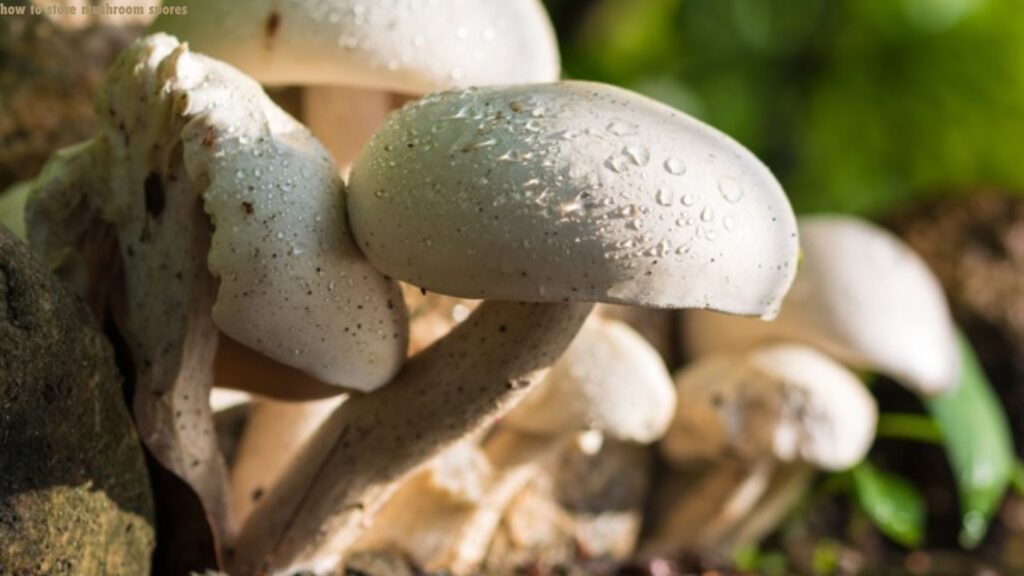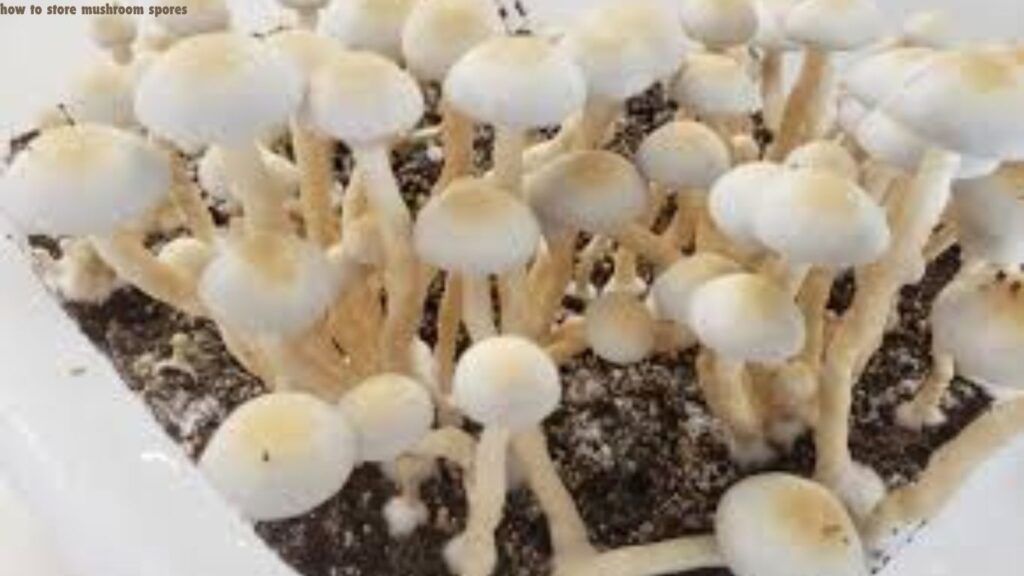How to Store Mushroom Spores for Maximum Longevity & Benefits
Putting away How to Store mushroom spores could appear to be a thing side interest, yet it’s a absolute expertise for mushroom lovers, cultivators, and scientists.
Knowing How to store mushroom spores properly is pivotal, whether you’re hoping to protect an impressive strain, share with friends, or save a support for future growth.
How to Store mushroom spores?
How to Store mushroom spores are small conceptive units produced by How to Store mushroom spores, like seeds in plants. These little particles convey the genetic material vital for the development and improvement of new mushrooms.
Spores are commonly set free from the gills, pores, or other spore-bearing designs of mature mushrooms.

When they land in a proper climate, they can sprout and grow into new mycelium, the vegetative piece of a growth. This exchange is necessary for the engendering and endurance of mushroom species.
Why Store Mushroom Spores?
Putting away How to Store mushroom spores is important because of multiple factors:
Safeguarding of Uncommon Strains: On the off possibility that you have an attractive or unusual mushroom strain, putting away spores allows you to save this genetic material for sometime later.
This can be extremely important for scientists and specialists who need to keep a particular variety or foster new themes.
Comfort for Evolution: By putting away spores, you ensure that you have a qualified list for future mushroom growth projects.
This takes out the need to more than once gather or buy spores, making it simpler to begin new developing groups.
Imparting to Other people: On the off chance that you’re essential for a mushroom-developing local area, putting away spores permits you to impart your number one or novel strains to separate fans. Proper capacity guarantees that the spores stay suitable and clear when passed on.
Collecting How to Store mushroom spores
Picking How to Store mushroom spores is a climactic move toward saving and putting away them for sometime later. This is the way to successfully make it happen:
Important Devices: To gather spores, you’ll require:
New mushrooms with completely developed covers.
A sanitized blade or scissors for cutting.
A piece of clean paper or aluminum foil for the spore print.
A glass container or cup to cover the mushroom cap.
Bit by bit Guide
Select a Developed Mushroom: Pick a How to Store mushroom spores that is completely developed. The cap ought to be open and level, uncovering the gills or pores under. Immature mushrooms won’t produce a full spore print.
Set up the Mushroom: Utilizing a disinfected blade or scissors, slice the How to Store mushroom spores stem near the cap. This helps with determining heresy.
Make the Spore Print: Spot the cap, gills or pores down, onto a perfect piece of paper or aluminum foil. This surface will collect the spores as they drop from the mushroom.

Cover the Cap: To forestall pollution and keep the climate controlled, cover the mushroom cap with a glass container or cup. This makes a little, covered region where spores can drop uninhibitedly.
Stand by and Gather: Leave the structure collected for 24 hours. The spores will fall from the mushroom and land on the paper or foil under it.
Choosing the Right Storage Method
Choosing the right stockpiling method for How to Store mushroom spores relies upon your conditions — whether you’re expecting quick use or long haul security. Here is a study of various stockpiling techniques:
Temporary Ability: Ideal for putting away spores that you intend to use inside half a month to a couple of months.
Strategies
Paper Envelopes: Spot the spore print inside a paper envelope. This process is basic and booming for short capacity. Ensure the envelope is fixed firmly to safeguard against moisture and pollutants.
Agar Plates: Moving spores to agar plates can be effective for sure-fire use or temporary stockpiling. The agar provides a supplement-rich conditions where spores can stay just for half a month to months.
Long haul Stockpiling: This technique is best for guarding spores for months to years. It ensures that spores stay fair and prepared for future growth or examination.
Techniques
Needles: Fill sanitized needles with straight water and spores. The water stops the spores and keeps them feasible for ample periods. Store the arrows in a cool, dull spot.
Storing Spores in Paper Envelopes
Storing How to Store mushroom spores in paper envelopes is a simple and practical method for short-term protection. Here’s how you can do it:
Prepare the Envelopes: Take a paper envelope and write essential elements on it, such as the mushroom species, date of collection, and any other relevant information. This will help you keep track of what’s inside.
Materials Needed
Paper Envelopes: Use clean, dry envelopes made of standard paper. Avoid using envelopes that are coated or treated, as these can affect the spores.
Spore Print: Ensure the spore print is thoroughly dry before putting it in the envelope.
Prepare the Envelopes: Take a paper envelope and write essential elements on it, such as the How to Store mushroom spores species, date of collection, and any other relevant information. This will help you keep track of what’s inside.
Embed the Spore Print: Cautiously place the parched spore print inside the envelope. Confirm the print is totally dry to stay away from dampness related issues, which can prompt pollution or damage.
Seal the Envelope: Close the envelope safely. To boost insurance, you can utilize tape or a paste stick to totally seal the fold.

Store Properly: Spot the fixed envelope in a cool, dry spot away from direct sunlight. A sideboard or a case in a dry, dull region functions admirably.
Benefits
Effortlessness: This method is direct and doesn’t need special hardware.
Practical: Paper envelopes are frugal and broadly available.
Storing Spores in Syringes
Putting away How to Store mushroom spores in needles is a unusual technique for long haul protection. This procedure ensures that spores stay reasonable and are not difficult to use when required. This is the way to make it happen:
Materials Needed
Sanitized Needles: Utilize sterile needles to forestall defilement. You can buy these from a lab store store or on the web.
Refined Water: This forestalls impiety and keeps up with the feasibility of the spores.
Spore Print: Ensure that your spore print is dry and designed for use.
Ability Cycle
Set up the Needle: In the event that the needle isn’t pre-cleaned, disinfect it by lapping or using an autoclave. Guarantee it is totally dry before use.
Load up with Water: Bring up refined water into the needle. Leave a little air hole to oblige the spore suspension.
Add Spores: Using a clean agent or by wiping the spore print straightforwardly into the needle, move a limited quantity of spores into the needle. Twirl tenderly to combine the spores equally in the water.
Seal the Needle: Click the needle cap safely to forestall spillage and tainting.
Name the Needle: Mark the needle with the How to Store mushroom spores species, date of assortment, and some other important data. This helps keep with pursuing of your spores.
Storing Spores on Agar Plates
Putting away How to Store mushroom spores on agar plates is a clear technique for both short stockpiling and usefulness testing.
Agar plates give a supplement rich climate that upholds the development of spores, permitting you to survey their reasonability and safeguard them for sometime later. Here is a manual for this process:
Agar Plates: Pre-arranged or custom made agar plates. Agar plates are petri dishes loaded up with a gel-like medium that upholds parasitic development.
Immunization Circle: A clean device used to move spores to the agar.
Spore Print: Ensure your spore print is dry before use.
Prepare the Agar Plates: If you’re using pre-prepared agar plates, confirm they are clean and not expired.
If you’re making your own, prepare the agar according to the works’s education and pour it into petri plates. Allow it to firm.
Transfer Spores: Using a sterile injection loop, wring a small amount of spores from the spore print. Gently streak the spores across the surface of the agar plate. This allows the spores to come into contact with the nutrient-rich medium.
Seal the Plate: Cover the plate with its lid to contain contamination and dehydration. Seal the edges with parafilm or tape if necessary.
Conclusion
Putting away How to Store mushroom spores is an important expertise for any mushroom fan. By following the methods illustrated above, you can protect your strains, share with others, and ensure you normally have an list of spores for future growth.
FAQS
How long are mushroom spore prints good for?
The viability of a mushroom spore print can vary counting on the species, but generally, spores can remain possible for several months to a few years.
Will mushroom spores survive freezing?
The results imply that most fungi would accept fast or slow freezing if warming was quick.
How do you make spore prints permanent?
Again, using an artist’s “fixative” (or simply hair spray) can always “fix” the spores. Caution: Hold the fountain at least 12 to 15 inches above the print, or you may blast the spores right off the paper!
How long are fungal spores viable?
Spores can persist for thousands of years, frozen in the permafrost (Kochkina et al., 2012), with the oldest likely spores removed after 250 million years from salt crystals (Vreeland, Rosenzweig, & Powers, 2000).
How do you store mushroom spore plugs?
Store the bag of stoppers in the refrigerator unless you will be using them within the next few days. Most plug spawns are frozen white or covered with a white to brown chewy mycelium, all showing healthy growth.
Also Read

One Comment